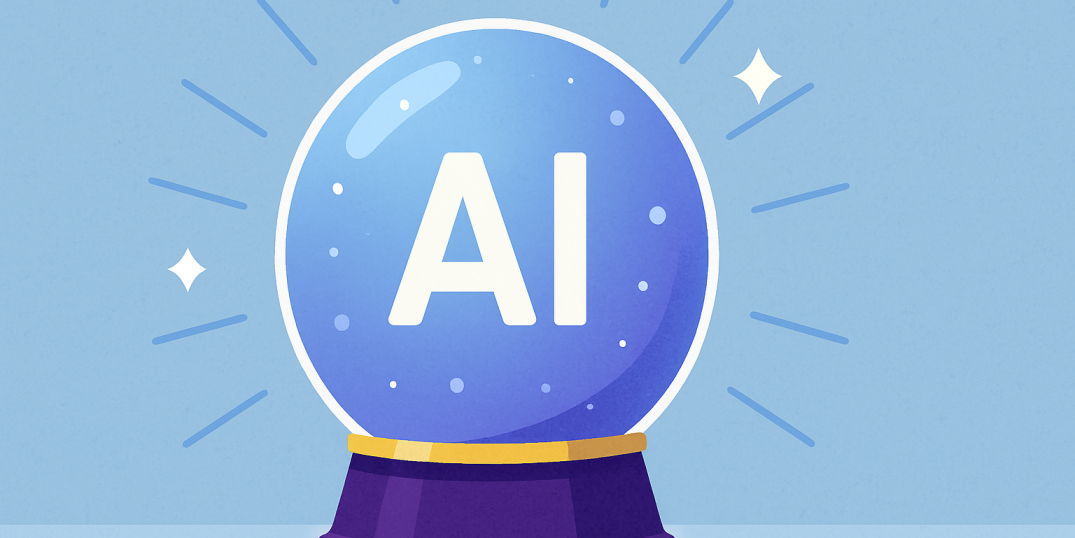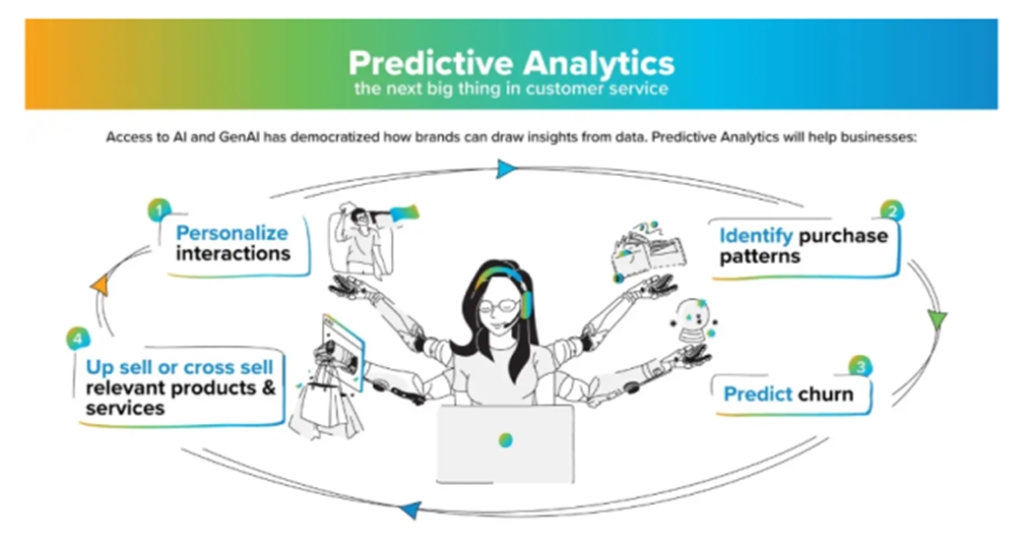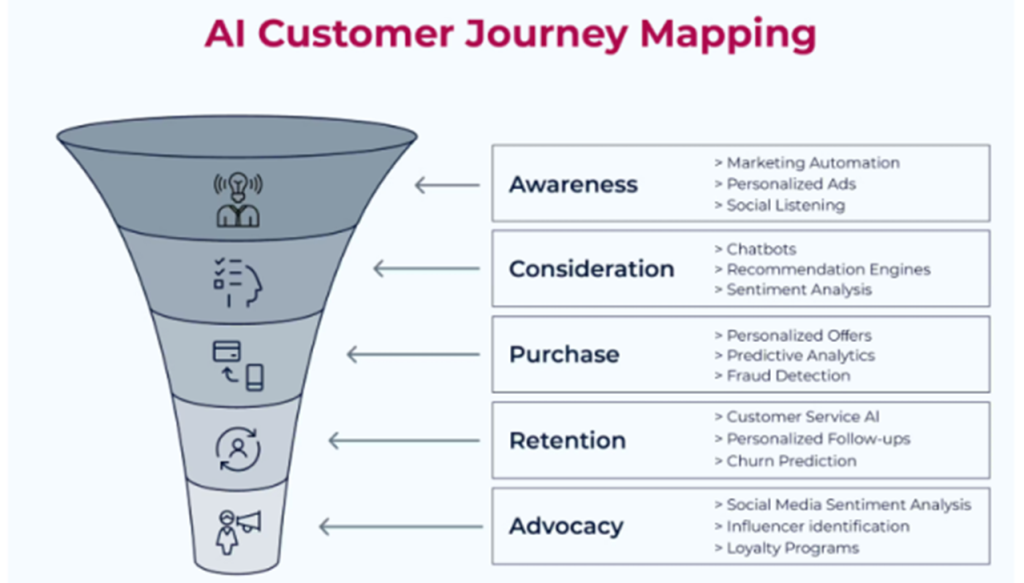- Home
- Science-Backed Marketing Insights
- How to Predict Customer Behavi ...

As you know, historically, marketers have always relied on past behavior to guess what subscribers might do in the future. Various metrics, such as open rates, purchase history, and demographic segments, have long been the engine for email campaigns. But here’s the problem, and you know it: they’re reactive, not proactive.
Now, thanks to AI in customer behavior analysis, the time for revolution has come.
Just think of it. What if you could predict what your customers will do next? What if you could align your emails with their intent before they even realize it themselves? AI-powered customer behavior prediction technology can do it all.
It is all different now. You can now use AI-powered predictive analytics when planning your email marketing campaigns. Whether it’s spotting who’s about to churn, forecasting the next purchase, or nudging a high-value subscriber back into action, AI can give you a way to stay one step ahead. However, according to Salesforce’s State of Marketing report, AI is among both top marketing priorities and challenges.
From this article, you will know how to plan your email marketing campaigns and understand customer behavior using the power of AI.
Why Predicting Behavior Matters in Email Marketing
Let’s consider the most common challenges you can face as an email marketer. We have several key questions to work out.
Question 1: Who is about to churn?
You can use AI to detect patterns in disengagement, like declining open rates or shrinking time on site. If you can flag those infidels early, it is possible to re-engage them with special offers, surveys, or loyalty perks.
Question 2: Who’s ready to upgrade or buy again?
If you are in the SaaS business, you can identify accounts consistently hitting usage limits. If you are engaged in e-commerce, it could be predicting when a customer is due for a reorder.
Question 3: Who needs a nudge to come back?
You know that dormant subscribers with historically high spending aren’t just inactive—they’re missed revenue. Using AI customer insights, you can plan your reactivation campaigns more effectively.
Predictive email campaigns based on AI will ensure you’re not sending the wrong message at the wrong time. Using AI, you can make your campaigns feel personal, relevant, and timely. This is how you will translate it into higher engagement and revenue, which will, eventually, drive sales.
What Is Predictive AI in Email Marketing?
Let’s find out how it works. Predictive AI in email marketing uses machine learning (ML) models to forecast future customer behavior based on patterns in existing data. This is theory.
Thanks to AI, predictive analytics is making headway in transforming the overall customer experience (CX), as mentioned in the Predictive Analytics—The Next Big Thing in Customer Service article by Sprinklr.
If you want more insights, you can read more about the fundamentals of predictive AI in this Sendigram article. Now, let’s look at how predictive AI applies specifically to email marketing:
These are common models used in email marketing:
🔷 Churn prediction: It identifies which customers will most likely go inactive.
🔷 Next purchase prediction: It helps estimate when and what they’re likely to buy next.
🔷 Lifetime value estimation (LTV): This useful feature spots high-value customers worth extra retention efforts.
🔷 Engagement scoring: This technique will help you forecast who’s most likely to open, click, or convert.
Making a long story short, predictive AI lets you move from “spray and pray” to carefully crafted, targeted campaigns that anticipate your customer’s intent.
Tools That Enable Behavior Prediction with AI
Now, let’s move from theory to practice. Let’s check out the platforms and tools you can use right now:
#1: Klaviyo
✅ Next order prediction: This feature calculates when each customer is about to place their next order. Using it, you can time replenishment or product recommendation emails.
✅ Churn risk analysis: It flags customers whose engagement patterns suggest they may stop opening or buying soon, paving a way for your preventive actions.
✅ Customer lifetime value (CLV): You can estimate long-term customer worth with CLV. It will let you focus retention campaigns on the most profitable segments, making your planning more efficient.
👉 Best for: We think about e-commerce brands that look for data-driven retention and reactivation campaigns.
#2: Mailchimp
✅ Predictive demographics: This feature uses AI to detect age ranges, gender, and preferences even when subscribers don’t provide that data. Really useful!
✅ Behavioral targeting: Using behavioral targeting, you can identify subscribers that are most likely to purchase, click, or engage based on their browsing and email history.
✅ Product recommendations: That’s simple. It tailors emails with AI-driven product recommendations for e-commerce stores.
👉 Best for: Go for it if you are a small- to medium-sized business that looks to AI-powered customer behavior analysis.
#3: ActiveCampaign
✅ Predictive sending: If you want to optimize send times for each contact to maximize open rates, this feature is your choice!
✅ Engagement tagging: Using this feature, you can automatically score and tag subscribers based on interaction levels.
✅ Behavioral automation: It lets you differentiate your customers by defining their predicted behavior, such as “likely to upgrade” or “likely to churn.”
👉 Best for: Consider it if your business is focused on automated customer journeys and personalized nurture campaigns.
#4: Salesforce Marketing Cloud (Einstein AI)
✅ Churn prediction with AI: It offers advanced modeling if your task is to identify disengagement risk in both B2C and B2B contexts.
✅ Dynamic segmentation: Using this feature, you can develop real-time segments that update automatically when customer behaviors change.
✅ Content recommendations: This AI feature chooses the best product, offer, or content piece for each subscriber at send time.
👉 Best for: If you work at a big company that needs scalable predictive modeling and cross-channel personalization, pick this service.
#5: HubSpot
✅ Predictive lead scoring: Use it if you need to rank leads by likelihood to convert. Your sales team would be happy as they would be able to prioritize outreach.
✅ Behavior-based triggers: This HubSpot’s feature launches workflows when AI predicts customer readiness, for example, with high likelihood to buy.
✅ Pipeline forecasting: Use its predictive analytics capability to estimate deal closings and revenue impact.
👉 Best for: If you work in a B2B SaaS or service-based business and look for tighter alignment between marketing and sales, take it on board!
Now, let’s look at the variety of AI tools currently available.
👉 ChatGPT + Google Sheets/CRM exports: Go for it if you need quick, lightweight custom modeling.
👉 Pecan AI, Siftrock, Blueshift: Choose these platforms if you are an AI pro already, as they are great for advanced customer behavior prediction.

Step-by-Step: How to Predict Customer Behavior with AI
Let’s look at four steps that will bring you to correctly predicting customer behavior.
Step 1: Collect the right data
Data is the foundation. If you don’t provide data, AI won’t work.
Check out what the key data sources are:
🔷 Email engagement (opens, clicks, and send times)
🔷 Website activity (pages visited, cart abandonments, and browsing patterns)
🔷 Purchase history (products, spending, and frequency)
🔷 Inactivity/drop-off points (the moment when users stopped engaging)
Our tip: Take into consideration that consistent tagging of links and events makes predictive models far more accurate.
Step 2: Use AI to build behavior models
At this point, you have two main options:
🔷 First, you can use built-in platform tools like Klaviyo’s predictive analytics or Salesforce’s Einstein AI.
🔷 Second, you can export data from your CRM and run quick analysis with general tools like ChatGPT. You can combine it with Sheets or Python notebooks.
The great thing is that you have options, as both approaches can highlight which customers are slipping away, who’s likely to purchase, and when to act.
Step 3: Segment based on predicted actions
Please keep in mind that generic lists are outdated. If you use predictive AI, you can build smart segments such as:
🔷 “High churn risk—no engagement in 15+ days”
🔷 “Likely to buy again within next five days”
🔷 “First-time purchase with high LTV potential”
Step 4: Craft emails based on predicted behavior
| Predicted action | Email type | Key elements |
| Likely to churn | Win-back campaign | Discount, reminder of value, and easy re-engagement |
| Likely to upgrade | Upsell or feature highlight | Showcase premium features, social proof |
| Likely to repeat purchase | Restock/reminder email | Personalized product recommendations, timing cues |
| Dormant but high LTV | Exclusive “VIP” comeback offer | Loyalty rewards, limited-time incentive |
What can be done creatively in email copy to stop people from leaving? Think of this line, for example: “Hello, John! We noticed you haven’t logged in for a while. Let’s fix it. Here’s 20% off your next purchase if you return this week. Stay tuned!”
Examples of Predictive Email Campaigns in Action
Let’s imagine situations when you can analyze customer behavior using AI-powered predictive capabilities:
👉 E-commerce: A fancy skincare brand predicts when a moisturizer will run out (30 days) and triggers a replenishment email before the customer runs dry. In fact, AI helps you establish customer service at its best.
👉 SaaS: A project management tool detects when free users are hitting their file upload limit, prompting an upgrade offer at the perfect moment.

Pitfalls to Avoid
Even with advanced AI, you can stumble. Beware and watch out for three things:
⚠️ Relying on AI alone: Models aren’t flawless. Always check them with your human touch.
⚠️ Spamming based on weak signals: Just because your customer browsed once, it doesn’t mean they’re ready to buy.
⚠️ Ignoring data hygiene: Messy incoming data means unreliable predictions.
If you’re looking for a deeper dive into risks, check this useful Sendigram article: AI in Email Marketing: What Can Go Wrong?
To Sum Up
With or without AI, you have reached the finish line!
As you can see, predictive AI can take your email marketing from reactive to proactive. This is the revolution we’re talking about. Instead of guessing or relying on outdated lists, you can do three wonderful things: spot churn before it happens, anticipate purchases and upsell, and tailor campaigns to high-value customers. So, you can make magic with your next purchase prediction email.
Then, if you combine it with clean data, the right tools we’ve recommended, and a well-crafted strategy, predictive analytics will make magic, connecting you with your audience.
By the way, if you’re evaluating online platforms, here’s a helpful guide to the best email marketing services right now, provided by Sendigram. And if you’re curious about what’s next, check out our masterpiece on AI-driven marketing.
The future of email marketing is about anticipating consumer behavior, not reacting to it—and AI is how you get there. According to McKinsey’s The State of AI report, organizations are starting to make changes designed to generate future value from gen AI. So, follow the trends, and be proactive, not reactive!



